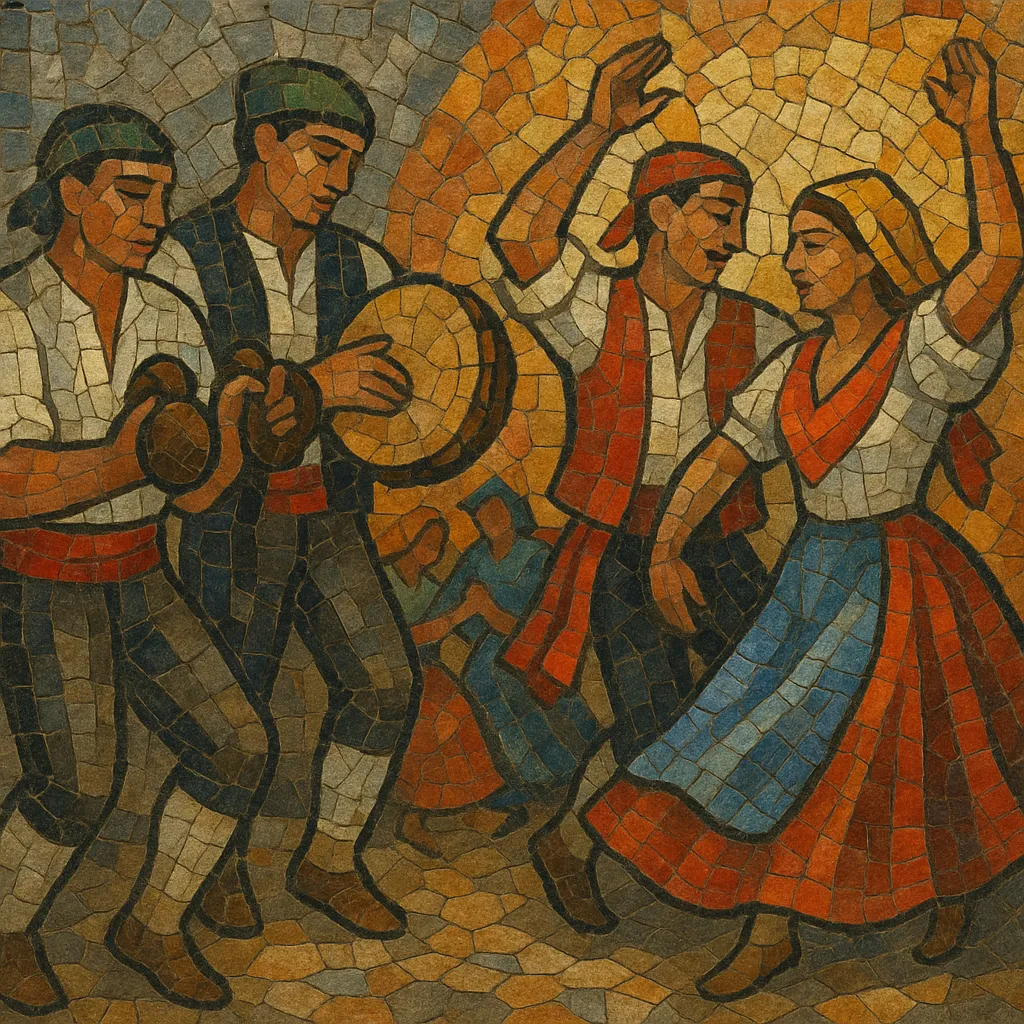
Tajaraste is a lively traditional music-and-dance genre from the Canary Islands, especially rooted in the north of Tenerife (La Orotava, Los Realejos, Icod, Tegueste, and the Anaga area). It is performed at romerías, local fiestas, and ritual processions, where song, percussion, and dance intertwine.
Musically, tajaraste is driven by a brisk duple meter (commonly felt in 2/4) led by the tambor (a hand-held drum) and the characteristic chácaras (large Canarian castanets). Voices typically sing in call-and-response or strophic forms with refrains, using texts that reference local life, humor, devotion, and place names. In contemporary ensembles, guitars and timple may double rhythms or harmonies, though the core sound remains percussive and vocal.
The dance is energetic and communal: couples or small groups form circles or lines, with stomping steps, hand movements, and figures that mirror the rhythmic accents. The overall mood is festive and infectious, inviting participants and onlookers to join.
Tajaraste is widely regarded as a syncretic heir to pre-Hispanic Guanche ritual music and dance, fused with Iberian (especially Andalusian and broader Spanish) folk practices after Castilian conquest in the late 15th century. The use of frame drums and large castanet-like idiophones (chácaras) echoes North African Amazigh timbral aesthetics, while Spanish poetic strophes and festival contexts shaped its sung forms.
Through the 17th–19th centuries, tajaraste took root in rural communities of northern Tenerife. It was danced at religious feast days, harvest celebrations, and neighborhood gatherings, where verses were improvised or adapted to local events. The genre’s duple pulse and straightforward, repeatable refrains made it ideal for long community dances.
The 20th century saw tajaraste incorporated into staged folklore alongside isas, folías, and malagueñas. Radio, recordings, and growing folklore ensembles helped standardize certain local variants (e.g., tajaraste de Teno Alto, de El Amparo, de La Perdoma). While guitars and timple were added in some arrangements, many groups preserved the core of chácaras, tambor, and voices.
Today, tajaraste remains a vibrant symbol of Canarian identity. Folkloric groups, municipal schools, and festival circuits keep multiple local styles active. Fieldwork and archival projects have documented step patterns and lyrical repertoires, while modern performers balance authenticity with accessibility for larger stages.

